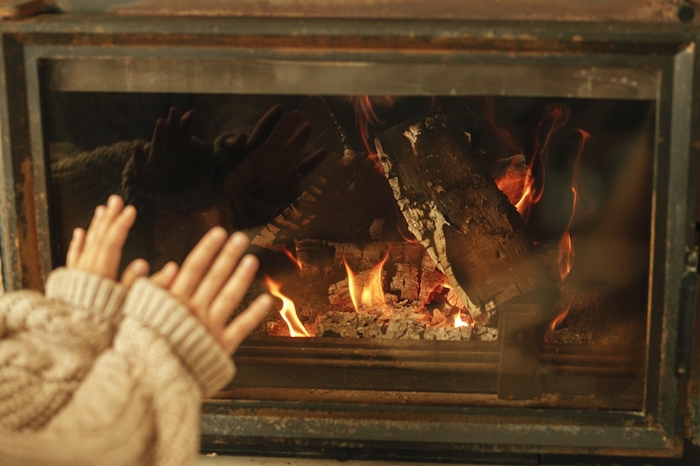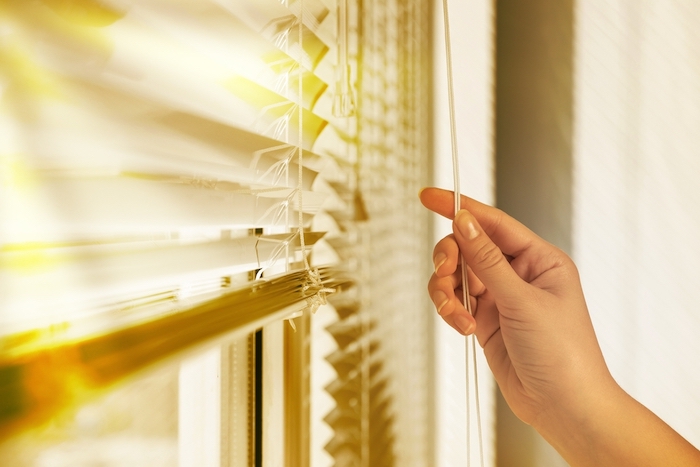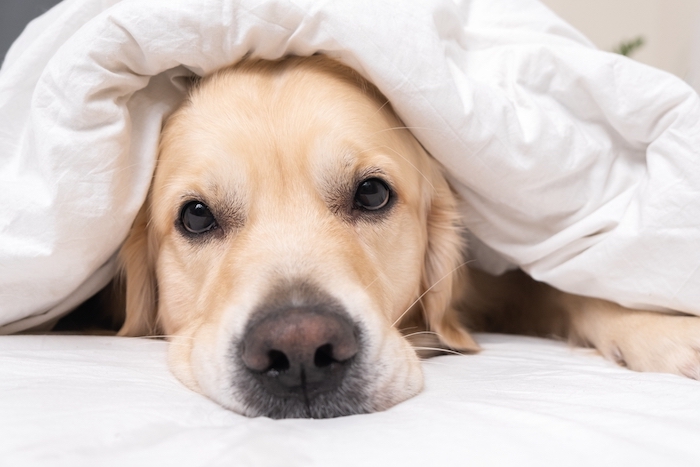Winter is quick to approach once the holidays begin, and with it comes snow and freezing temperatures. People will start reaching for sweaters, blankets, and the thermostat. That’s right, winter inevitably coincides with a rise in heating bills. Whether it’s through electricity, natural gas, or other utilities, it costs more to stay warm. But it’s possible to stave off winter’s chill without making your heating bill skyrocket. These tips and hacks will have you feeling toasty — not miserly.
Minimizing Heat Loss
The simplest way to get more heat for your money is to look for places where your precious heat is escaping. Battle drafts and other heat-loss hot spots, and you could stay warm for a lot less. Check the sections below to see where to start.
Plug any Holes
A drafty door or window is more than a security hazard; it’s an invitation to let cold air inside. This will spur residents to raise the heat in retaliation. Instead of going for the furnace, try to find the source of the draft. If it’s not immediately obvious, run your fingers along the doorframe or windowsill. You should be able to feel where the air is coming from. Then, find a way to patch up the leak. A rolled-up shirt or towel will usually work as a temporary solution. Depending on the spot, expandable foam may be a serviceable solution. If your solution isn’t the permanent one, make plans to have a professional fix the draft as soon as possible.
Close Your Fireplace’s Damper

Fireplaces are naturally most useful in the wintertime, providing ambiance, light, and heat. They can also end up cooling the house when not in use. When you extinguish the fire, make sure you close the damper. The smoke being pushed out and the flames themselves do enough to keep the outside cooler air from entering the house. When the fire is out, though, cold air can freely slip inside. It’s also a good idea to shut it for security reasons — as well as to prevent any critters from crawling in.
Use Your Fans Properly (or Turn Them Off)
Fans work by circulating air throughout a room. This is primarily used to either cool an area or prevent smoke or steam from building up. It’s for these reasons that fans still see use in the winter. After all, nobody wants to set off the fire alarm while cooking the holiday dinner! But as soon as the smoke has cleared, turn off the fan. Even if you didn’t intend to use it to cool the room, it still will. Similarly, turn off any fans in the bathroom when you’re finished.
Ceiling fans are an interesting case. While they’re designed to move cold air around, they can also keep warm air circulating. The trick is to have the fan rotate counterclockwise. This will push rising hot air back down and warm up the room. Most ceiling fans have a switch or setting that allows counterclockwise movement.
As for standing fans, most people put them in storage during the colder months. But others keep them running year-round, usually due to a lack of circulation in a particular room. Some might run them at night to prevent overheating. If you fall into the latter category, try sleeping with fewer blankets or comforters. It may take a few nights to find the perfect balance for you. If it’s due to a lack of circulation, you might want to try the next tip.
Close Those Doors!
No, we’re not just talking about outer doors here (though it goes without saying that you should when it’s cold).
Heat has a tendency to linger if you let it. Closing a door essentially traps heat inside. That’s why bathrooms right after a shower are so humid. So if you’re not using a room, close the door behind you. It’ll seal the warmth until the next time someone uses it.
That said, there are a few caveats. Heat will easily escape if the room has one or more outside-facing walls. If your bedroom falls into this category, it may be more beneficial to leave the door open. Cold air can just as easily be trapped, and nobody wants to walk into a freezing bedroom. A good rule of thumb is to leave the doors closed to guest rooms, offices, and bathrooms. Leave bedroom doors open, depending on location.
Check Your Insulation
Proper insulation is one of the most effective ways to keep your home warm in the winter and reduce your heating bills. But not all insulation is created equal, and over time it can degrade and become less effective.
To start, check the insulation in key areas where heat is most likely to escape. This includes the attic, walls, and floors — especially those adjacent to unheated spaces like garages or basements. The attic is particularly crucial, as heat rises and can easily escape if the insulation is insufficient. Visually inspect the insulation to see if it appears old, flat, or if there are any gaps or holes. You can also touch it (carefully — if it’s fiberglass, use gloves) to feel for dampness or cold spots; these signs indicate areas where the insulation isn’t performing well.
If your insulation isn't up to par, consider upgrading it. This might mean adding more material on top of existing insulation in the attic or replacing old insulation in walls. When selecting insulation, look at the R-value — a measure of how well insulation can resist heat flow. Higher R-values mean better insulating power. For most homes, especially in cooler climates, an R-value of 30 to 60 in the attic and 13 to 15 in walls is recommended. Check with a contractor in your area to make sure that your insulation is up to snuff.
Draw Your Curtains
When the sun is streaming in through your window, it could help heat up your home (we’ll talk more about that in a moment). But when it’s dark out, there are no such advantages to leaving your windows uncovered. Considering that your heat can escape through the window pane more easily than it can get through your insulated walls, you may want to draw your curtains; the layer of fabric (and the air between the fabric and the glass) can help keep heat from escaping the interior of the room.
Maintaining and Improving Your Heating System
Your home’s HVAC system could cost you more if it’s not up to date and properly maintained. Consider the options below for getting a more effective — and cost-efficient — heating system.
Clean Your Air Ducts
Vents are one of the least-cleaned areas of a house due to their inaccessibility. They should be cleaned on a semi-regular basis — at least the access ports and openings. Not only will this allow more warm air into the room, but it also improves health. Every room’s airflow comes from the air ducts; if the ducts are dirty, it can have an impact on your lungs and breathing.
Professional cleaning is a time-consuming and expensive process, but it may be necessary if airflow doesn’t improve. It helps to consider it a long-term investment. It’ll cost both time and money now; however, in the end, it’ll prevent additional costs on heating and cooling bills — and possibly even health care. That’s sure to be a breath of fresh air!
Maintain and Repair Your Furnace — or Replace It Entirely
Consider bringing in a specialist to check your furnace. If it’s old, leaking, or malfunctioning, a professional can fix it. They’ll also advise if you should replace it. While this is a drastic measure and not always applicable, newer furnaces tend to be more efficient and cost-effective. A new furnace also won’t have the same problems as an older one.
Explore Alternatives to Cranking Up the Heat
Your home’s HVAC system isn’t the only way to keep warm. Are you doing everything you can to keep yourself and your space warm before you resort to spending big bucks on heating? Here are some ideas to explore.
Let That Sunlight In!

The sun disappears faster during the winter thanks to daylight saving time — or so it seems. It doesn’t, though; the sun is closer to the Northern Hemisphere than it is in the summer, and it still offers plenty of warmth and natural light. Whenever possible, open up the shades and blinds to let sunlight in. Not only will this provide warmth from the sun’s rays, but it’ll also cut down on electric use. It’s almost like creating a miniature solar energy plant! That said, once the sun sets, close the blinds. They’ll keep the room from getting too cold.
Bundle Up

Perhaps the most obvious tip on this list is to lower the thermostat and wear warmer clothes. After all, one of the main appeals of winter is cozying up with a warm drink under a fluffy blanket. Now, we aren’t suggesting you keep the temperature so low that you’ll need to wear a hat and mittens indoors. The best course of action is to set the temperature to about two degrees cooler than you actually want it. Remember that bodies naturally heat up when moving.
Consider a Space Heater
Sometimes, there’s one particular spot in a room that has an unstoppable chill. Maybe it’s the area underneath a desk or table or a corner in a less-used side of the room. For these cold spots, it’s useful to bring in a space heater. This will warm up the area without cranking up the thermostat and heating the rest of the house. Just be sure to turn off or unplug the heater when not in use to save on the electricity bill as well.


